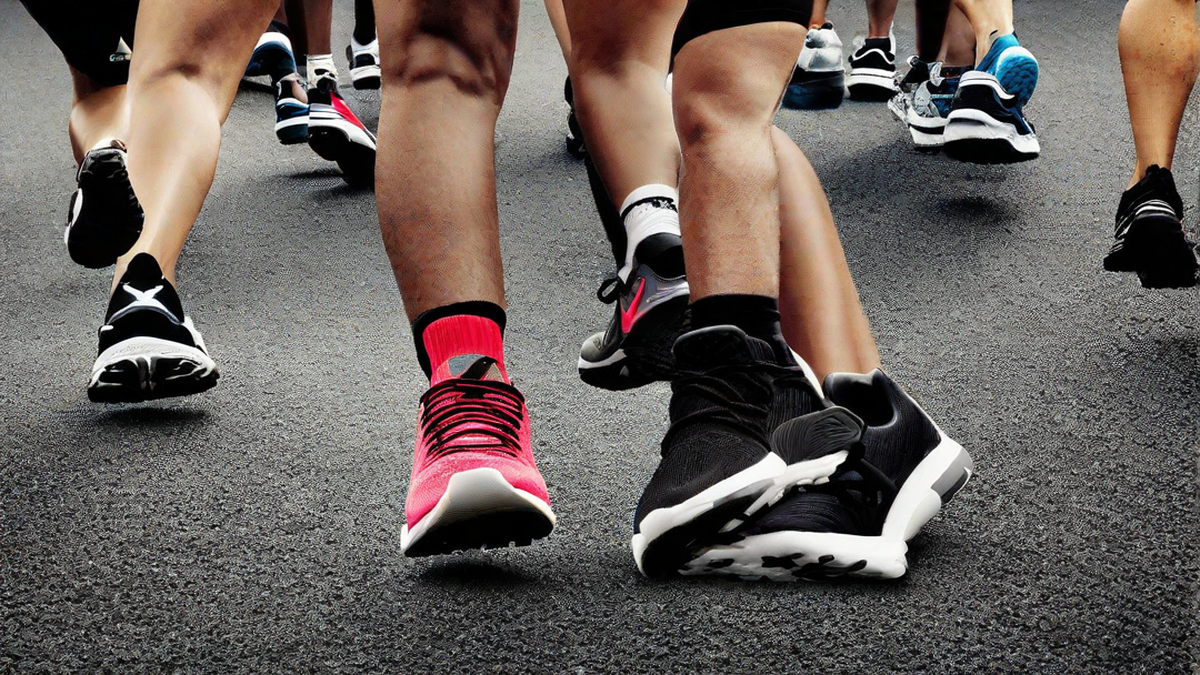Walking shoes and running shoes may look similar on the surface, but as a runner and avid walker myself, I can attest that they are not the same. Each type of shoe is designed to meet the specific needs of the activity it is meant for. Let’s dive deeper into the key differences between walking shoes and running shoes.
Difference in Design
One of the main differences between walking shoes and running shoes lies in their design. Walking shoes are typically designed with a more flexible sole that allows for a natural heel-to-toe movement. They also have a more rounded and wider toe box to provide ample room for foot expansion during the walking motion.
On the other hand, running shoes have a stiffer sole to provide better support and stability during the high-impact nature of running. They often come with additional cushioning in the heel and forefoot areas to absorb the shock generated with each stride. Running shoes also tend to have a more tapered toe box to aid in propulsion and increase running efficiency.
Impact Absorption
The impact forces experienced during walking are significantly lower compared to running. Walking shoes are designed to provide adequate cushioning to absorb the smaller impact forces and protect the joints. The cushioning in walking shoes is usually more evenly distributed throughout the shoe to provide a comfortable and supportive feel.
Running shoes, on the other hand, are designed to provide enhanced shock absorption due to the higher impact forces generated while running. They often have specialized cushioning technologies and materials, such as air or gel pockets, to provide maximum shock absorption and reduce the risk of injuries like shin splints or stress fractures.
Motion Control
Walking shoes and running shoes also differ in terms of motion control. Walking involves a heel-to-toe rolling motion, whereas running involves repetitive and forceful impacts on the feet. As a result, running shoes are specifically designed to control the motion of the foot and provide stability during the running gait cycle.
Running shoes often incorporate features like medial posts or firmer midsoles to provide pronation control for those who overpronate (foot rolling inward excessively) or supination control for those who underpronate (foot rolling outward excessively). These features help to maintain proper alignment and prevent excessive stress on the feet and legs.
Personal Experience
As someone who enjoys both walking and running, I can personally vouch for the importance of wearing the correct shoes for each activity. I have made the mistake of using my running shoes for long walks, and the lack of proper support and cushioning became evident after a few miles. Similarly, using walking shoes for running was uncomfortable and put unnecessary strain on my feet and knees.
Investing in a pair of dedicated walking shoes and running shoes has not only improved my performance but also enhanced my overall comfort and reduced the risk of injuries. While it may seem tempting to use one pair of shoes for both activities, it is essential to understand the specific needs of each activity and choose the appropriate footwear accordingly.
Conclusion
Although walking shoes and running shoes may appear similar, they are designed with different purposes in mind. The design, cushioning, and motion control features of each shoe type cater to the specific needs of walking and running. To ensure optimal comfort and performance, it is crucial to invest in the right shoes for each activity. So, lace up your walking shoes for a leisurely stroll and put on your running shoes for that next exhilarating run!

